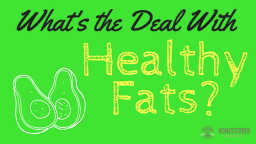Flax seeds are a pretty popular health item as of late. They can be bought either ground, in seed form, or in a highly nutritious oil.
As the healthy fat craze continues, flax seed has proved itself to be a desirable form of healthy omegas-3s. I have always enjoyed it ground on top of yogurt or in multigrain bread, while I enjoy the oil in salad dressings.
However, what I did not learn until recently is that flax seed oil is also used as a natural remedy. While it’s great for day-to-day health maintenance, it’s also a great natural health first aid item too, and I’m always looking for ways to diversify my healthy medicine chest.
Of course, health and diet are so interrelated, that it should come as no surprise that something that is amazingly healthy for you is also effective at alleviating and even curing many maladies. Here are some of the wonderful health benefits of flax seed and flax seed oil:
Assist Healthy Digestion
First of all, besides the beneficial omega-3s, flax seed is also very high in fiber, which is an essential nutrient for many bodily functions. For this reason, it can promote digestive regularity, and help to detoxify the body. This is due to its high level of mucilage gum content. Mucilage is a type of fiber that forms as a gel, and because it is water soluble, it is incredibly beneficial to the intestinal tract. It helps regulate digestion as well as maximize nutrient absorption.
If you are struggling with any digestive health issues, flax seed can be very helpful.
Anti-Inflammatory
Flax seeds are also very anti-inflammatory and are often used as a natural remedy for arthritis. The beneficial omega-3s in flax seeds, which make up 50% of the fat content of flax seeds is a natural enemy of pro-inflammatory compounds. Ground flax seed is a great source for these healthy omega-3s, but flax seed oil is even better. Ground flax also contains lignans, a certain kind of plant chemical which can also combat inflammation of the joints.
Cancer-Fighting
Lignans are also well-known for fighting cancer. In tests, flax seed containing high amounts of lignans have shown to considerably reduce cancerous tumors on mice as well as significantly help men with prostate cancer see a reduction in symptoms.
Ease Symptoms of Menopause
These amazing plant chemical lignans you now know so much about also help to ease the symptoms of menopause. Once absorbed, the lignans convert to plant estrogen in the body, which can help reduce hot flashes. For this reason, they are also linked to lower rates of breast cancer as well as reduction of breast cancer tumors.
Lower Cholesterol
The high fiber content of flax seeds, along with the powerful flavonoids they contain, all contribute to lowering “bad” cholesterol in the body.
How to “Use” Flax Seeds
At this point you’re probably wondering, well, how do you I use this amazing nutrient to gain these health benefits?
If you’re not used to consuming flax seed as part of your regular diet, don’t worry! It’s very easy to integrate into a normal diet, and it’s relatively neutral, nutty flavor doesn’t need much getting used to, it’s quite subtle.
First of all, it’s worth nothing that if you are struggling with any of these issues, from poor digestion to cancer, that simply introducing flax seed to your diet might not be enough. No matter what you’re dealing with, nothing is worth more than an all-around healthy diet, one that is balanced, full of plant-based nutrients, healthy fats, and lots of whole foods, preferably organic and antibiotic-free. Lots of naturally fermented foods and raw dairy are excellent as well. If you do have any health issues, you might be avoiding anything from dairy to meat to carbs, not everyone has the same dietary needs or desires, but anything that contains reasonable portions of whole foods with enough vegetables tends to work for almost everyone. Read our Ultimate Guide to Health Diets for more.
Integrating flax seeds into your diet can be a great way to transition to healthier foods, though. Here are some ideas for how to eat it on a daily basis. Keep in mind that the best forms of flax seeds are either freshly ground or in oil form; pre-ground flax doesn’t have as many of the benefits as freshly ground.
Ways to use flax oil:
For the most part, you can use flax oil as you would any other oil. But since it can be rather expensive and you are going to health benefits, you’ll probably want to eat it straight, added to dishes by the teaspoon or tablespoon. Here are some ideas:
- in salad dressings
- drizzled over toast or on sandwiches
- in bulletproof coffee
- stirred into or drizzled over yogurt
- as a marinade or cooking oil for meat
- stirred into hot cereal
- by the spoonful
Ways to use ground flax:
If you are serious about regularly consuming ground flax, buying a small coffee grider and the whole seeds is the easiest way to do this. That way, you can grind them up as needed and reap all the benefits! Here are some ways to use them:
- sprinkled over yogurt
- in a smoothie
- in muffins or breads
- as a coating for lightly fried chicken
- stirred into pancake batter
- in meatloaf (in place of breadcrumbs)
- in cold or hot cereal
Hope this has given you some great ideas for how to use this amazing super food! Start boosting your health easily and naturally by incorporating flax seed into your diet today.
If you enjoyed this, you might also like….
Long-Term Survival for Homesteaders…
Natural Healing Secrets You Need to Know…
Effective Primal Diet Hacks…


